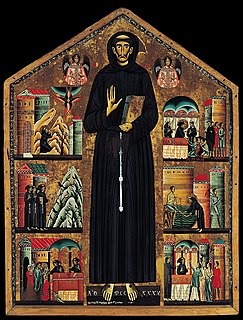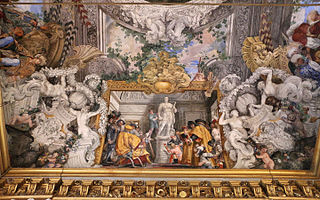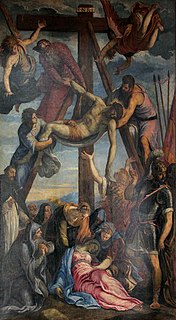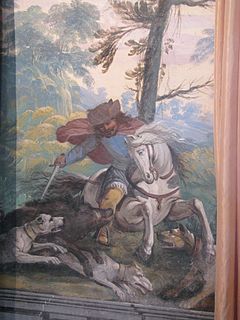 W
WPompeo Girolamo Batoni was an Italian painter who displayed a solid technical knowledge in his portrait work and in his numerous allegorical and mythological pictures. The high number of foreign visitors travelling throughout Italy and reaching Rome during their "Grand Tour" made the artist specialize in portraits. Batoni won international fame largely thanks to his customers, mostly British of noble origin, whom he portrayed, often with famous Italian landscapes in the background. Such Grand Tour portraits by Batoni were in British private collections, thus ensuring the genre's popularity in Great Britain. One generation later, Sir Joshua Reynolds would take up this tradition and become the leading English portrait painter. Although Batoni was considered the best Italian painter of his time, contemporary chronicles mention his rivalry with Anton Raphael Mengs.
 W
WBerlinghiero Berlinghieri, also known as Berlinghiero of Lucca, was an Italian painter of the early thirteenth century. He was the father of the painters Barone Berlinghieri, Bonaventura Berlinghieri, and Marco Berlinghieri.
 W
WBonaventura Berlinghieri was an Italian painter from Lucca, Italy, of the Gothic period. He was son of painter Berlinghiero Berlinghieri and brother of Barone and Marco Berlinghieri.
 W
WSimone Bianchi is an Italian comic book illustrator, painter, graphic designer and art instructor, known to Italian audiences for his work in comics, CD covers, music videos, TV commercials and role-playing games. His most popular Italian comics is (unfinished) trilogy Ego Sum. To American comic book readers, he is best known for his work on comics such as Detective Comics, Green Lantern and Wolverine. Bianchi's style is distinguished by his use of ink wash, or watercolor halftones, in rendering his work, a non-traditional technique by mainstream American standards.
 W
WPaolo Biancucci (1583–1653) was born at Lucca and was a pupil of Guido Reni, and influenced by Sassoferrato. He painted a Purgatory, for the church of the Suffragio, and an altar-piece of several Saints for San Francesco.
 W
WBorghese di Piero Borghese, also Borghese di Piero, was an Italian painter of the Florentine School, active in an early Renaissance-style. He should not be confused with Piero della Francesca whose real name was Pietro Borghese.
 W
WMichele Ciampanti was an Italian painter active mainly in Lucca. This painter has been identified as matching Berenson's putative Master of Stratonice, and is also called Michele di Michele Ciampanti.
 W
WGiovanni Coli (1636–1691) was an Italian painter from Lucca, active in the Baroque style.
 W
WAntonio Franchi (1638–1709) was an Italian painter of the 17th century, active mainly in Florence and Lucca.
 W
WFilippo Gherardi (1643–1704) was an Italian painter of the Baroque period.
 W
WGiorgio Lucchesi was an Italian painter. While initially he painted mainly painting figures and landscapes; after the 1880s he began to paint still-lives, but later of game, and then of rural agricultural scenes.
 W
WGiovanni Marracci (1637–1704) was an Italian Baroque painter who after training with Pietro da Cortona in Rome, worked in his home region of Lucca where he painted many altarpieces.
 W
WBernardino or Giovanni Bernardino Nocchi was an Italian painter, mainly of sacred and historic subjects.
 W
WPietro Paolini, called il Lucchese was an Italian painter of the Baroque period. Working in Rome, Venice and finally his native Lucca, he was a follower of Caravaggio to whose work he responded in a very personal manner. He founded an Academy in his hometown, which formed the next generation of painters of Lucca.
 W
WGiuseppe Porta (1520–1575), also known as Giuseppe Salviati, was an Italian painter of the late-Renaissance period, active mostly in Venice.
 W
WPietro Ricchi was an Italian painter of the Baroque period, born in Lucca.
 W
WGirolamo Scaglia was an Italian painter of the Baroque period. He was born in Lucca, and trained there with Pietro Paolini.
 W
WSimone del Tintore (1630–1708) was an Italian painter, active in his native Lucca. He is mainly known as a still-life painter but he may also have painted religious subjects.
 W
WStefano Tofanelli was an Italian painter during the Neoclassic period.
 W
WPaolo Zacchia il Vecchio, Zacchia the elder, or Zacchia di Antonio da Vezzano (1490-1561) was an Italian painter of the Renaissance period. He was born in Vezzano Ligure and active in Lucca. He probably trained Florence, his works show influences of Domenico Ghirlandaio and Fra Bartolomeo. His son Lorenzo di Ferro Zacchia or Zacchia il Giovane was also a painter and engraver, active in Lucca.